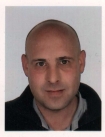Politics
NIGHTCLUB IN BRAZIL LINKED TO INVESTIGATION RELATED TO MK ULTRA
Ongoing investigation
USPA NEWS -
An ongoing investigation is uncovering serious evidence suggesting that a nightclub in the capital of Minas Gerais, Josefine, may have served as a testing ground for secret psychological and social experiments conducted on unsuspecting patrons. The operations, allegedly carried out between 2000 and 2015, point to possible collaboration between domestic and foreign intelligence agents in an effort reminiscent of the CIA’s infamous MK-Ultra program during the Cold War and the U.S. Civil Rights era (1954–1968).
A Controlled Environment
According to reports and collected documents, the venue was deliberately chosen for its socially vulnerable clientele—individuals who, at the time, faced stigma, segregation, and homophobia. This atmosphere of exclusion created an ideal environment for behavioral observation and manipulation, far from public scrutiny.
A Controlled Environment
According to reports and collected documents, the venue was deliberately chosen for its socially vulnerable clientele—individuals who, at the time, faced stigma, segregation, and homophobia. This atmosphere of exclusion created an ideal environment for behavioral observation and manipulation, far from public scrutiny.
Investigators suggest that the club’s architecture and ambiance were meticulously designed as part of the experiment. The main dance floor, for instance, was located at the farthest point from entrances and exits, forming a kind of sensory isolation chamber. The layout blocked external noises—such as traffic or street voices—trapping attendees inside a completely controlled microcosm.
Inside, sound, lighting, and even the circulation of psychoactive substances appeared to work in synchrony. Strobe lights flashed at precise intervals; the music alternated between hypnotic rhythms and shifting frequencies; and nearly inaudible sub- or ultrasonic waves were reportedly emitted.
While “mind control” may sound conspiratorial, scientific literature documents the use of light and sound stimuli to induce altered mental states. Studies on brainwave entrainment show that the brain tends to synchronize its electrical activity with external rhythmic patterns—like flashing lights or pulsing frequencies.
Inside, sound, lighting, and even the circulation of psychoactive substances appeared to work in synchrony. Strobe lights flashed at precise intervals; the music alternated between hypnotic rhythms and shifting frequencies; and nearly inaudible sub- or ultrasonic waves were reportedly emitted.
While “mind control” may sound conspiratorial, scientific literature documents the use of light and sound stimuli to induce altered mental states. Studies on brainwave entrainment show that the brain tends to synchronize its electrical activity with external rhythmic patterns—like flashing lights or pulsing frequencies.
In a nightclub setting, this principle can be amplified. The combination of binaural beats (slightly different frequencies in each ear), heavy bass vibrations, and pulsating lights can push the brain into specific patterns—such as alpha and theta waves, associated with drowsiness or trance. The result is a state of sensory disorientation, where perception of time, space, and self-control becomes blurred.
In this condition, individuals become more susceptible to external suggestion and emotional influence, while their critical thinking decreases. On a collective scale, such an effect could be exploited to observe mass social reactions—ranging from euphoria and fear to conformity and obedience.
Investigators theorize that the entire setup may have been deliberately orchestrated to test the limits of human psychological resistance and refine behavioral influence techniques in a real-world social context.
“You entered a state of near dissociation. Leaving the place, it didn’t feel like you had fun—it felt like you’d been tested, as if something had tampered with your inner self. It wasn’t just a party; it was something planned,” said one former attendee, who requested anonymity.
In this condition, individuals become more susceptible to external suggestion and emotional influence, while their critical thinking decreases. On a collective scale, such an effect could be exploited to observe mass social reactions—ranging from euphoria and fear to conformity and obedience.
Investigators theorize that the entire setup may have been deliberately orchestrated to test the limits of human psychological resistance and refine behavioral influence techniques in a real-world social context.
“You entered a state of near dissociation. Leaving the place, it didn’t feel like you had fun—it felt like you’d been tested, as if something had tampered with your inner self. It wasn’t just a party; it was something planned,” said one former attendee, who requested anonymity.
From Manipulation to Contamination
Reports also point to an even darker strategy: the deliberate use of stigmatized diseases—such as HIV—as a tool of control. According to testimonies, some clubgoers may have been intentionally exposed to infection.
The alleged sequence was chillingly effective: once infected in a gay social environment, victims were later re-registered in Brazil’s public health system for treatment. This process effectively made the State the sole provider of their life-sustaining medication—granting authorities control over both their medical history and their personal data.
Yet, the control extended beyond the physical. In a city with tight-knit social circles, the stigma of contamination became weaponized. Simply being known as someone who frequented the club or contracted the virus there became an open secret within the community—exposing victims to lasting trauma and psychological vulnerability. Dependence on the State and fear of exposure created an invisible prison, where control was exerted both through databases and social shame.
Reports also point to an even darker strategy: the deliberate use of stigmatized diseases—such as HIV—as a tool of control. According to testimonies, some clubgoers may have been intentionally exposed to infection.
The alleged sequence was chillingly effective: once infected in a gay social environment, victims were later re-registered in Brazil’s public health system for treatment. This process effectively made the State the sole provider of their life-sustaining medication—granting authorities control over both their medical history and their personal data.
Yet, the control extended beyond the physical. In a city with tight-knit social circles, the stigma of contamination became weaponized. Simply being known as someone who frequented the club or contracted the virus there became an open secret within the community—exposing victims to lasting trauma and psychological vulnerability. Dependence on the State and fear of exposure created an invisible prison, where control was exerted both through databases and social shame.
Systemic Violations and the Call for Justice
Human rights experts warn that, if proven true, these allegations constitute severe and systematic violations of fundamental rights.
“We are talking about crimes of torture, non-consensual human experimentation, and assaults on human dignity. The scale and the alleged State participation elevate this to a deep institutional crisis,” said Dr. Helena Costa, Professor of International Law.
After years of secrecy, the case is finally surfacing, putting pressure on federal authorities. The Federal Public Ministry and Federal Police have reportedly been asked to open a formal inquiry. Identifying both the former operators of Josefine and potential victims are considered urgent steps toward uncovering the truth.
The report could not reach any of the alleged individuals involved in the nightclub’s operation. Brazilian intelligence agencies declined to comment, citing “speculative operations,” while the foreign embassies implicated in the case did not respond to requests for statements.
Human rights experts warn that, if proven true, these allegations constitute severe and systematic violations of fundamental rights.
“We are talking about crimes of torture, non-consensual human experimentation, and assaults on human dignity. The scale and the alleged State participation elevate this to a deep institutional crisis,” said Dr. Helena Costa, Professor of International Law.
After years of secrecy, the case is finally surfacing, putting pressure on federal authorities. The Federal Public Ministry and Federal Police have reportedly been asked to open a formal inquiry. Identifying both the former operators of Josefine and potential victims are considered urgent steps toward uncovering the truth.
The report could not reach any of the alleged individuals involved in the nightclub’s operation. Brazilian intelligence agencies declined to comment, citing “speculative operations,” while the foreign embassies implicated in the case did not respond to requests for statements.
The official silence stands in stark contrast to the voices of alleged victims, who now demand justice for acts that, if confirmed, would mark one of the darkest chapters of modern Brazilian history.
INFO BOX: The MK-Ultra Program and Its Legacy
The MK-Ultra Program was a covert and illegal research initiative by the U.S. Central Intelligence Agency (CIA), conducted primarily during the 1950s and 1960s. Its goal was to develop methods of mind control and behavioral modification through the use of drugs (such as LSD), hypnosis, sensory deprivation, and psychological abuse—often on unwitting human subjects.
Exposed by congressional hearings in the 1970s, MK-Ultra became a symbol of unethical experimentation and State-sponsored human rights violations.
INFO BOX: The MK-Ultra Program and Its Legacy
The MK-Ultra Program was a covert and illegal research initiative by the U.S. Central Intelligence Agency (CIA), conducted primarily during the 1950s and 1960s. Its goal was to develop methods of mind control and behavioral modification through the use of drugs (such as LSD), hypnosis, sensory deprivation, and psychological abuse—often on unwitting human subjects.
Exposed by congressional hearings in the 1970s, MK-Ultra became a symbol of unethical experimentation and State-sponsored human rights violations.
During the Civil Rights Movement, intelligence agencies also conducted domestic operations aimed at social control, surveillance, and psychological manipulation—sometimes overlapping with MK-Ultra and COINTELPRO, which targeted Black leaders and movements such as the Black Panther Party and Martin Luther King Jr. These programs revealed how psychological warfare and institutional racism intertwined in the 20th century, demonstrating the extent to which governments sought to dominate both minds and movements.
Echoes in Brazil: A Global Experiment Revisited
During Brazil’s military dictatorship (1964–1985), numerous cases of torture were documented in centers like DOI-CODI and OBAN, where political prisoners were subjected to electric shocks, simulated drownings, beatings, and sensory deprivation to break psychological resistance. These practices—though framed as “interrogation techniques”—closely mirrored methods developed under CIA programs such as MK-Ultra.
Echoes in Brazil: A Global Experiment Revisited
During Brazil’s military dictatorship (1964–1985), numerous cases of torture were documented in centers like DOI-CODI and OBAN, where political prisoners were subjected to electric shocks, simulated drownings, beatings, and sensory deprivation to break psychological resistance. These practices—though framed as “interrogation techniques”—closely mirrored methods developed under CIA programs such as MK-Ultra.
Both contexts reveal the use of pain, trauma, and manipulation of consciousness as tools of political control. Just as MK-Ultra sought to erase memories and shape behavior in the name of the Cold War, Brazil’s dictatorship used torture to silence dissent and impose submission—demonstrating how mind and body control became central weapons of authoritarian regimes.
Reports indicate that Brazilian security forces even used high-frequency strobe lights during “psychotechnical interrogations,” causing disorientation, nausea, and mental breakdowns.
Case 1: The “Truth Serum” and Sensory Disorientation at DOI-CODI (1973)
Year: 1973 (peak between 1970–1974)
Location: DOI-CODI, São Paulo — the regime’s main torture center
Victims: Numerous political prisoners, including journalist Vladimir Herzog (killed in custody, 1975)
Methods: Prisoners were injected with cocktails of sodium pentothal (a barbiturate), amphetamines, or LSD while exposed to strobe lights, deafening sounds, and sleep deprivation.
Objective: To accelerate psychological collapse and induce confusion, hallucination, and suggestibility for easier interrogation.
Reports indicate that Brazilian security forces even used high-frequency strobe lights during “psychotechnical interrogations,” causing disorientation, nausea, and mental breakdowns.
Case 1: The “Truth Serum” and Sensory Disorientation at DOI-CODI (1973)
Year: 1973 (peak between 1970–1974)
Location: DOI-CODI, São Paulo — the regime’s main torture center
Victims: Numerous political prisoners, including journalist Vladimir Herzog (killed in custody, 1975)
Methods: Prisoners were injected with cocktails of sodium pentothal (a barbiturate), amphetamines, or LSD while exposed to strobe lights, deafening sounds, and sleep deprivation.
Objective: To accelerate psychological collapse and induce confusion, hallucination, and suggestibility for easier interrogation.
Case 2: The “Sleep Cure” and Mind Control at Humberto Mauro Prison (1970s)
Location: Belo Horizonte, MG
Method: Detainees were subjected to total sleep deprivation, constant bright strobe lighting, loud sounds, and psychoactive drugs.
Goal: To “reeducate” prisoners by breaking their will and dismantling their ideological resistance.
Case 3: “Operation Goat in the Room” — Social Surveillance in the 1970s
Location: Bars, clubs, and universities in Rio de Janeiro and Brasília
Method: Intelligence agents infiltrated nightlife spaces, manipulating lighting, acoustics, and even drug distribution to induce confusion and monitor social behavior.
Objective: To discredit left-leaning movements, test group reactions, and refine mass influence tactics.
American Training and Influence
Research from the National Security Archive and Brazilian historians confirms that Brazilian military officers were trained by U.S. instructors in “advanced interrogation” and psychological warfare techniques. These programs took place at the School of the Americas (Panama) and Fort Benning (USA)—both hubs for exporting repressive methods across Latin America under the Operation Condor network.
Location: Belo Horizonte, MG
Method: Detainees were subjected to total sleep deprivation, constant bright strobe lighting, loud sounds, and psychoactive drugs.
Goal: To “reeducate” prisoners by breaking their will and dismantling their ideological resistance.
Case 3: “Operation Goat in the Room” — Social Surveillance in the 1970s
Location: Bars, clubs, and universities in Rio de Janeiro and Brasília
Method: Intelligence agents infiltrated nightlife spaces, manipulating lighting, acoustics, and even drug distribution to induce confusion and monitor social behavior.
Objective: To discredit left-leaning movements, test group reactions, and refine mass influence tactics.
American Training and Influence
Research from the National Security Archive and Brazilian historians confirms that Brazilian military officers were trained by U.S. instructors in “advanced interrogation” and psychological warfare techniques. These programs took place at the School of the Americas (Panama) and Fort Benning (USA)—both hubs for exporting repressive methods across Latin America under the Operation Condor network.
The Dark Legacy
In 2014, Brazil’s National Truth Commission documented dozens of cases of psychological torture and forced experimentation. Survivors described being drugged without consent, subjected to relentless noise, and exposed to simulated threats and indoctrination—all reminiscent of MK-Ultra conditioning.
Despite democratic progress, much of Brazil’s military-era archive remains classified. The full extent of these practices—and their possible continuation in modern contexts—remains unknown.
In 2014, Brazil’s National Truth Commission documented dozens of cases of psychological torture and forced experimentation. Survivors described being drugged without consent, subjected to relentless noise, and exposed to simulated threats and indoctrination—all reminiscent of MK-Ultra conditioning.
Despite democratic progress, much of Brazil’s military-era archive remains classified. The full extent of these practices—and their possible continuation in modern contexts—remains unknown.
Liability for this article lies with the author, who also holds the copyright. Editorial content from USPA may be quoted on other websites as long as the quote comprises no more than 5% of the entire text, is marked as such and the source is named (via hyperlink).





